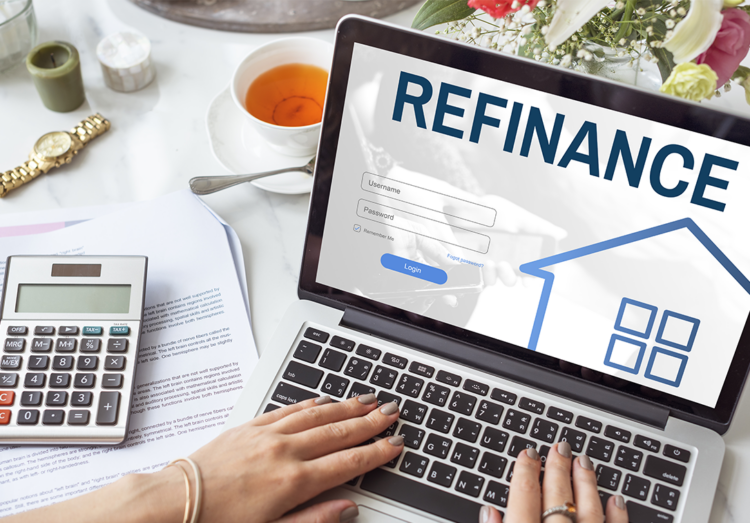In the realm of personal finance, few decisions are as significant as refinancing a mortgage. The thought of reevaluating one’s largest debt can be daunting, often clouded by misconceptions that circulate like urban legends. In this blog post, we’re here to dispel these myths, empowering homeowners with accurate information to make informed choices about mortgage refinancing.
Page Contents
Myth 1: Refinancing Always Leads to Financial Loss
The belief that refinancing inevitably results in financial loss is a common misconception. While refinancing entails upfront costs, such as closing fees, it’s essential to consider the long-term perspective. A lower interest rate can substantially reduce monthly payments and overall interest paid over the life of the loan. Careful calculation of break-even points helps homeowners determine how long it takes for savings to outweigh the initial costs.
Myth 2: Only High Credit Scores Qualify for Refinance
Credit scores do play a role in mortgage refinance eligibility, but they’re not the sole determinant. Many lenders offer options for borrowers with varying credit profiles.

Source: cnbc.com
While higher credit scores may secure better rates, borrowers with average scores can still find favorable deals. It’s crucial to explore different lenders and loan programs to discover the best fit for individual financial situations.
Myth 3: Refinancing Is Only Worthwhile with a Substantial Rate Drop
Contrary to popular belief, a significant interest rate drop isn’t the sole motivation. Even a modest rate reduction can yield substantial savings over time, especially for homeowners planning to stay in their current property for the long term. Additionally, it can offer the opportunity to switch from adjustable-rate to fixed-rate mortgages, providing stability in an unpredictable market.
Myth 4: Adjustable-Rate Mortgages Can’t Be Refinanced

Source: sourcemortgage.ca
Some homeowners mistakenly think that adjustable-rate mortgages (ARMs) are locked in and cannot be refinanced. However, funding an ARM is not only possible but can be a strategic move. Refinancing into a fixed-rate mortgage can shield homeowners from potential interest rate hikes in the future, providing peace of mind and predictability in monthly payments.
Myth 5: Closing Costs Make Refinancing Not Cost-Effective
Closing costs, often seen as a deterrent, can indeed add up. However, this myth overlooks the long-term benefits of funding. Comparing the total cost of the refinanced loan, including closing fees, with the potential savings on lower interest payments is essential. Many lenders offer “no-closing-cost” or “low-closing-cost” refinance options, spreading the fees over time or incorporating them into the loan itself.
Myth 6: Home Value Decline Prevents Successful Refinance

Source: hdfc.com
The misconception that declining home values prevent refinancing overlooks innovative solutions available to homeowners. The Home Affordable Refinance Program (HARP) and other options cater to those with diminished home equity. These programs enable eligible borrowers to refinance even if the value of their property has decreased, allowing them to take advantage of lower interest rates.
Myth 7: Existing Lender Is the Only Option for Refinancing
While familiarity with an existing lender can be comforting, it’s far from the only route to refinancing. Shopping around and obtaining quotes from multiple lenders can reveal a spectrum of offers. Different lenders might have varying requirements, rates, and terms. Exploring various options empowers homeowners to negotiate better deals and secure terms that align with their financial goals.
Myth 8: Refinancing Process Is Excessively Time-Consuming
The idea that refinancing is a lengthy and cumbersome process is a common deterrent. However, thanks to technological advancements, the process has become significantly streamlined. Much of the documentation and communication can be conducted online, reducing paperwork and time investment. While there is still some effort involved, the potential long-term savings make the process well worth the time.
Myth 9: Refinancing Is Impossible for Underwater Mortgages
Being “underwater,” where the remaining mortgage balance exceeds the home’s value, doesn’t necessarily eliminate funding options. Government-backed programs like HARP, and traditional lenders, offer opportunities for underwater mortgages. Refinancing can help homeowners secure more favorable terms and escape high-interest loans, providing a lifeline for those struggling with negative equity.
Myth 10: Refinancing Requires a Lengthy Commitment

Source: newrez.com
The misconception that refinancing locks homeowners into a lengthy commitment is unfounded. While funding does involve signing new loan terms, these can vary in length, just like the initial mortgage. Homeowners can choose loan terms that suit their current financial situation and future goals. Shorter terms can lead to faster debt payoff, while longer terms offer lower monthly payments. The flexibility to tailor the loan term empowers homeowners to align their mortgage with their changing circumstances.
Myth 11: Refinancing Comes With Hidden Charges
The belief in hidden charges often deters homeowners from exploring options. However, reputable lenders are required by law to provide transparent information about the costs associated with a refinanced loan. This includes the interest rate, closing costs, and any other fees. Homeowners can request a Loan Estimate from potential lenders, a standardized form that outlines all the costs, allowing for easy comparison and a clear understanding of the financial commitment.
Myth 12: Refinancing Is a Last-Resort Option
Waiting until financial difficulties arise to consider funding is a misconception that can limit opportunities. Refinancing can be a proactive strategy to enhance financial stability. It can free up funds for other investments, consolidate debts, or provide capital for essential expenses. By exploring options before necessity strikes, homeowners can secure better rates and terms, positioning themselves for a more secure financial future.
Myth 13: Refinancing Is Only About Lowering Rates

Source: mortgageequitypartners.com
While securing a lower interest rate is a significant benefit of refinancing, it’s not the only consideration. Homeowners can also opt for cash-out funding, where they borrow more than the remaining mortgage balance and receive the difference in cash. This can be used for home improvements, debt consolidation, or other financial goals. By understanding the diverse options available, homeowners can tailor their refinancing decision to their unique needs.
Conclusion: Empowering Informed Refinance Decisions with Accurate Insights
In a world where misinformation can cloud even the most crucial decisions, separating fact from fiction is paramount. The realm of mortgage funding is no exception. By dispelling these prevalent myths, we’ve illuminated the path to making well-informed choices about this pivotal financial move. From debunking the notion of inevitable financial loss to challenging the belief that underwater mortgages are beyond rescue, we’ve covered the spectrum of misconceptions that can deter homeowners from exploring the benefits of refinancing.
Drawing from their extensive experience in the real estate market, the Kittle Real Estate Group understands the importance of accurate information in making informed decisions about mortgage funding. Just as dispelling myths clears the path to financial clarity, Kittle Real Estate Group empowers homeowners with the knowledge needed to navigate the complexities of real estate transactions confidently.




